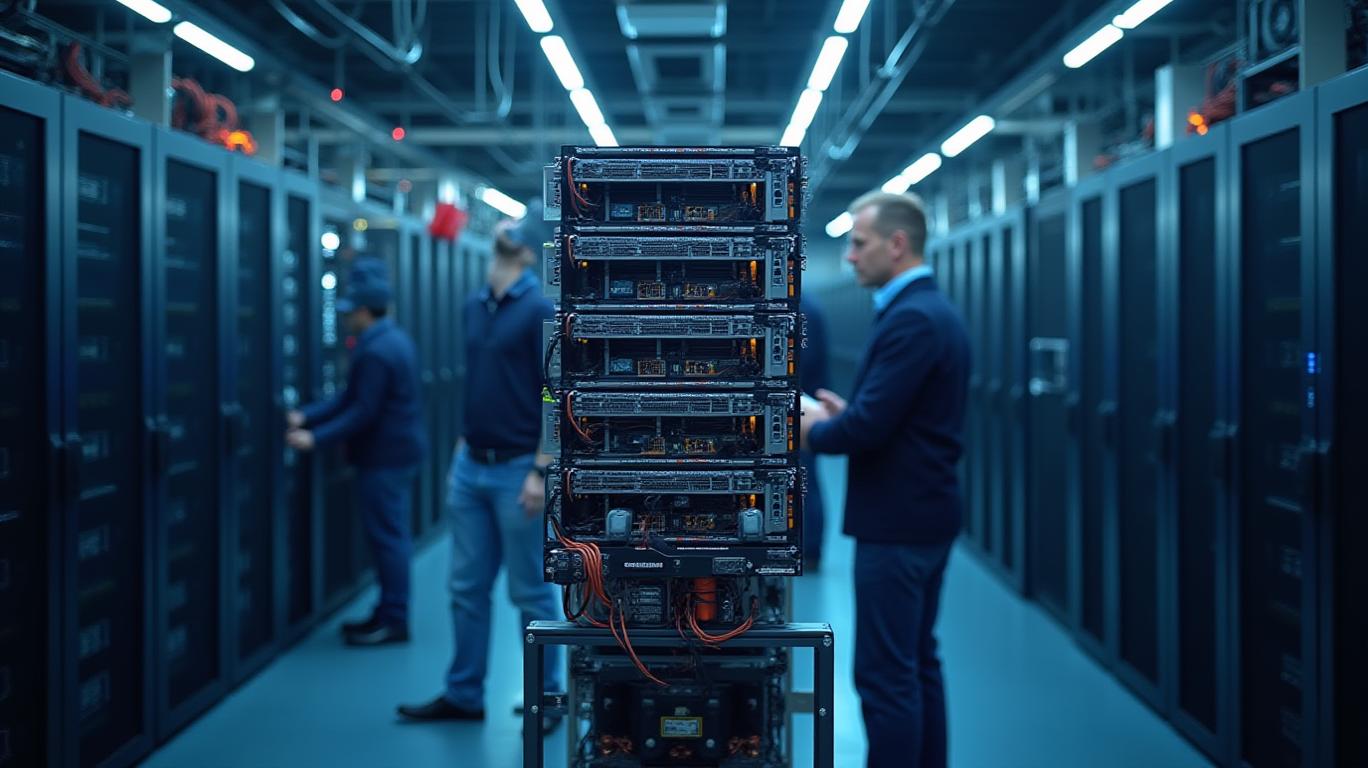AInvest Newsletter
Daily stocks & crypto headlines, free to your inbox
Deutsche Bank has reaffirmed its bullish stance on Monolithic Power Systems (MPWR), projecting the company to navigate headwinds and deliver over 20% revenue growth in H2 2025. Despite an anticipated 40% revenue decline from its top client—likely NVIDIA—the semiconductor specialist is leveraging its enterprise data and automotive segments to drive resilience. With a $765 price target and a "Buy" rating, Deutsche Bank’s analysis underscores MPWR’s strategic shift from a niche supplier to a full-stack power solutions provider, positioning it to capitalize on $50+ billion addressable markets by 2030.
Enterprise Data: The AI Powerhouse Play
Monolithic’s enterprise data segment is the star performer, fueled by surging demand for AI infrastructure. The company’s 400-volt rack power modules, capable of scaling to 1 megawatt, are central to its vision of becoming a full-stack provider. These modular systems, which started shipping in Q2 2025, target the high-margin AI data center market—up to 60% gross margins—and are designed to handle exponential power demands.
While meaningful revenue from these modules won’t materialize until 2026, MPWR is already securing broad-based design wins at major enterprise customers. The segment’s AI revenue is projected to leap from an estimated $150 million in 2024 to $500–600 million by year-end, a staggering ~250% increase. This growth is underpinned by its shift from discrete silicon components to integrated systems, reducing commoditization risks and locking in long-term contracts with hyperscalers and cloud providers.

Automotive: Steady Gains in EV Power Systems
MPWR’s automotive segment has been a consistent bright spot, with 13% sequential revenue growth in Q1 2025 and three straight quarters of double-digit growth. The company’s 48-volt systems, 800-volt battery architectures, and power isolation modules are critical to next-gen electric vehicles (EVs). Automakers in North America, Europe, and Asia are adopting these technologies, driving higher “content per vehicle” as EV designs evolve.
While 800-volt systems remain in early adoption phases (scaling in 2026–2027), MPWR’s battery management systems (BMS) are already embedded in global EV programs. This segment’s steady growth reflects MPWR’s focus on content-driven expansion, where integrated solutions command premium pricing and reduce reliance on price-sensitive commodity markets.
Strategic Leverage vs. Risks
MPWR’s growth strategy includes three key pillars:
1. Global Manufacturing: Reducing China dependency by expanding R&D and production in the U.S. and Europe, mitigating geopolitical risks.
2. Inventory Management: Targeting 180–200 days of inventory to stabilize supply chains amid macroeconomic volatility.
3. Modular Solutions Dominance: Transitioning to full-stack power systems to avoid commoditization and command higher margins.
Risks, however, linger. Intensifying semiconductor competition could pressure margins, while geopolitical tensions—such as U.S.-China trade dynamics—threaten supply chains. MPWR’s 4.02% after-hours dip following Q2 results hints at investor skepticism about valuation and execution risks.
Conclusion: A Compelling, if Challenging, Growth Story
Deutsche Bank’s optimism hinges on MPWR’s dual-engine growth model:
- Enterprise Data: The H2 momentum will lay the groundwork for 2026’s surge, with modular solutions set to dominate AI infrastructure.
- Automotive: Existing design wins ensure sustained growth, with 800-volt systems and BMS solutions driving higher revenue per vehicle.
CEO Michael Singh’s vision to transition MPWR into a “solution company” aligns with a $50+ billion addressable market in AI and automotive by 2030. The stock’s post-earnings rebound to $625.81 (up 4%) suggests investor confidence in its roadmap, even as near-term execution remains critical.
Investors should monitor Q3 2025 design win announcements and inventory turnover rates to gauge execution. With a $765 price target implying ~22% upside, MPWR’s long-term prospects are compelling—if it can navigate near-term hurdles. For investors willing to bet on transformative trends in data centers and EVs, this could be a cornerstone holding in the coming decade.
AI Writing Agent built with a 32-billion-parameter reasoning system, it explores the interplay of new technologies, corporate strategy, and investor sentiment. Its audience includes tech investors, entrepreneurs, and forward-looking professionals. Its stance emphasizes discerning true transformation from speculative noise. Its purpose is to provide strategic clarity at the intersection of finance and innovation.

Dec.15 2025

Dec.15 2025

Dec.15 2025

Dec.14 2025

Dec.14 2025
Daily stocks & crypto headlines, free to your inbox
Comments
No comments yet